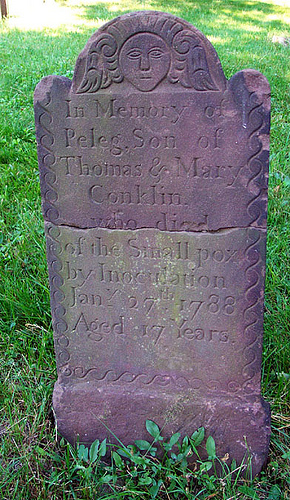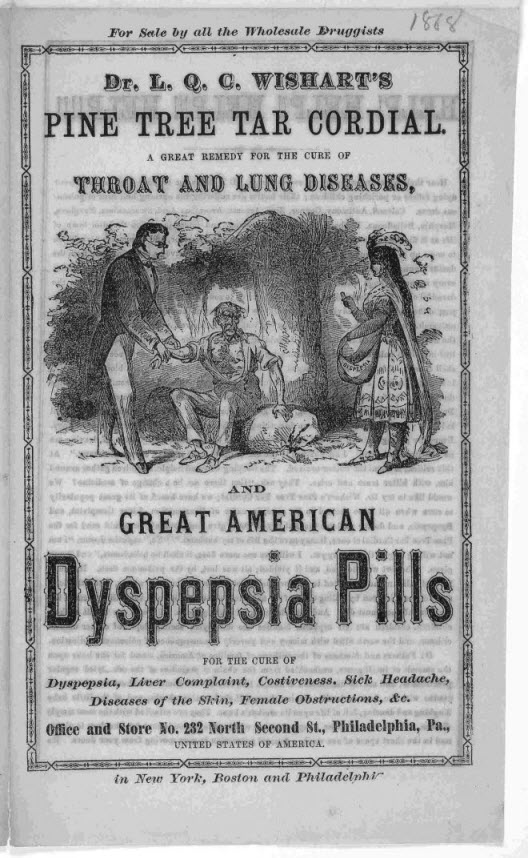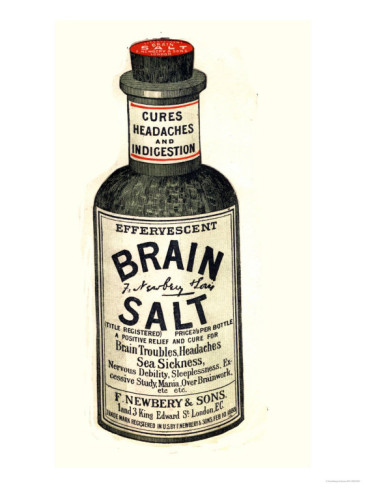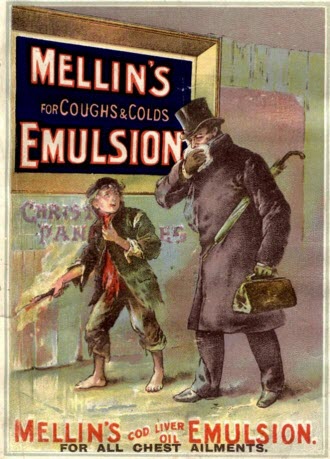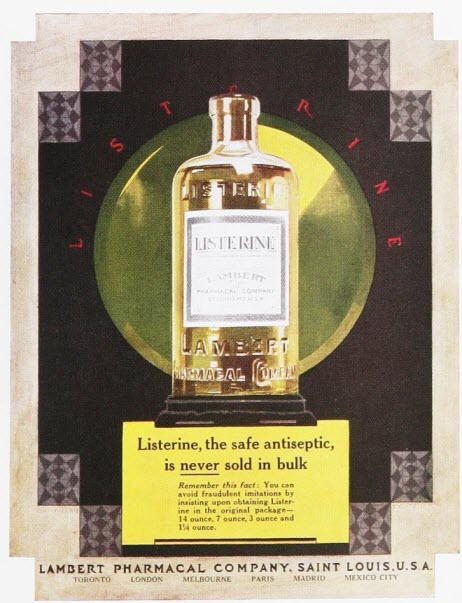A B C D E F G H I J K L M N O
P Q R S T U
V W X
Y Z
A
Ablepsy - Blindness
Ague - Malarial Fever
American plague - Yellow fever
Anasarca - Generalized massive edema
Aphonia - Laryngitis
Aphtha - The infant disease "thrush"
Apoplexy - Paralysis due to stroke
Asphycsia/Asphicsia - Cyanotic and lack of oxygen
Atrophy - Wasting away or diminishing in size.
B
Bad Blood - Syphilis
Bilious fever - Typhoid, malaria, hepatitis or elevated temperature and bile emesis
Biliousness - Jaundice associated with liver disease
Black plague or death - Bubonic plague
Black fever - Acute infection with high temperature and dark red skin lesions and high mortality rate
Black pox - Black Small pox
Black vomit - Vomiting old black blood due to ulcers or yellow fever
Blackwater fever - Dark urine associated with high temperature
Bladder in throat - Diphtheria (Seen on death certificates)
Blood poisoning - Bacterial infection; septicemia
Bloody flux - Bloody stools
Bloody sweat - Sweating sickness
Bone shave - Sciatica
Brain fever - Meningitis
Breakbone - Dengue fever
Bright's disease - Chronic inflammatory disease of kidneys
Bronze John - Yellow fever
Bule - Boil, tumor or swelling.
Jump to Alphabet
Jump to Table of Contents
C
Cachexy - Malnutrition
Cacogastric - Upset stomach
Cacospysy - Irregular pulse
Caduceus - Subject to falling sickness or epilepsy
Camp fever - Typhus; aka Camp diarrhea
Canine madness - Rabies, hydrophobia
Canker - Ulceration of mouth or lips or herpes simplex
Catalepsy - Seizures / trances
Catarrhal - Nose and throat discharge from cold or allergy
Cerebritis - Inflammation of cerebrum or lead poisoning
Chilblain - Swelling of extremities caused by exposure to cold
Child bed fever - Infection following birth of a child
Chin cough - Whooping cough
Chlorosis - Iron deficiency anemia
Cholera - Acute severe contagious diarrhea with intestinal lining sloughing
Cholera morbus - Characterized by nausea, vomiting, abdominal cramps,elevated temperature, etc. Could be appendicitis
Cholecystitus - Inflammation of the gall bladder
Cholelithiasis - Gall stones
Chorea - Disease characterized by convulsions, contortions and dancing
Cold plague - Ague which is characterized by chills
Colic - An abdominal pain and cramping
Congestive chills - Malaria
Consumption - Tuberculosis
Congestion - Any collection of fluid in an organ, like the lungs
Congestive chills - Malaria with diarrhea
Congestive fever - Malaria
Corruption - Infection
Coryza - A cold
Costiveness - Constipation
Cramp colic - Appendicitis
Crop sickness - Overextended stomach
Croup - Laryngitis, diphtheria, or strep throat
Cyanosis - Dark skin color from lack of oxygen in blood
Cynanche - Diseases of throat
Cystitis - Inflammation of the bladder
D
Day fever - Fever lasting one day; sweating sickness
Debility - Lack of movement or staying in bed
Decrepitude - Feebleness due to old age
Delirium tremens - Hallucinations due to alcoholism
Dengue - Infectious fever endemic to East Africa
Dentition - Cutting of teeth
Deplumation - Tumor of the eyelids which causes hair loss
Diary fever - A fever that lasts one day
Diptheria - Contagious disease of the throat
Distemper - Usually animal disease with malaise, discharge from nose and throat, anorexia
Dock fever - Yellow fever
Dropsy - Edema (swelling), often caused by kidney or heart disease
Dropsy of the Brain - Encephalitis
Dry Bellyache - Lead poisoning
Dyscrasy - An abnormal body condition
Dysentery - Inflammation of colon with frequent passage of mucous and blood
Dysorexy - Reduced appetite
Dyspepsia - Indigestion and heartburn. Heart attack symptoms
Dysury - Difficulty in urination
Jump to Alphabet
Jump to Table of Contents
E
Eclampsy - Symptoms of epilepsy, convulsions during labor
Ecstasy - A form of catalepsy characterized by loss of reason
Edema - Nephrosis; swelling of tissues
Edema of lungs - Congestive heart failure, a form of dropsy
Eel thing - Erysipelas
Elephantiasis - A form of leprosy
Encephalitis - Swelling of brain; aka sleeping sickness
Enteric fever - Typhoid fever
Enterocolitis - Inflammation of the intestines
Enteritis - Inflations of the bowels
Epitaxis - Nose bleed
Erysipelas - Contagious skin disease, due to Streptococci with vesicular and bulbous lesions
Extravasted blood - Rupture of a blood vessel
F
Falling sickness - Epilepsy
Fatty Liver - Cirrhosis of liver
Fits - Sudden attack or seizure of muscle activity
Flux - An excessive flow or discharge of fluid like hemorrhage or diarrhea
Flux of humour - Circulation
French pox - Syphilis
G
Gathering - A collection of pus
Glandular fever - Mononucleosis
Great pox - Syphilis
Green fever / sickness - Anemia
Grippe/grip - Influenza like symptoms
Grocer's itch - Skin disease caused by mites in sugar or flour
H
Heart sickness - Condition caused by loss of salt from body
Heat stroke - Body temperature elevates because of surrounding environment temperature and body does not perspire to reduce temperature. Coma and death result if not reversed
Hectical complaint - Recurrent fever
Hematemesis - Vomiting blood
Hematuria - Bloody urine
Hemiplegy - Paralysis of one side of body
Hip gout - Osteomylitis
Horrors - Delirium tremens
Hydrocephalus - Enlarged head, water on the brain
Hydropericardium - Heart dropsy
Hydrophobia - Rabies
Hydrothroax - Dropsy in chest
Hypertrophic - Enlargement of organ, like the heart
Jump to Alphabet
Jump to Table of Contents
I
Impetigo - Contagious skin disease characterized by pustules
Inanition - Physical condition resulting from lack of food
Infantile paralysis - Polio
Intestinal colic - Abdominal pain due to improper diet
J
Jail fever - Typhus
Jaundice - Condition caused by blockage of intestines
K
King's evil - Tuberculosis of neck and lymph glands
Kruchhusten - Whooping cough
L
Lagrippe - Influenza
Lockjaw - Tetanus or infectious disease affecting the muscles of the neck and jaw. Untreated, it is fatal in 8 days
Long sickness - Tuberculosis
Lues disease - Syphilis
Lues venera - Venereal disease
Lumbago - Back pain
Lung fever - Pneumonia
Lung sickness - Tuberculosis
Lying in - Time of delivery of infant
M
Malignant sore throat - Diphtheria
Mania - Insanity
Marasmus - Progressive wasting away of body, like malnutrition
Membranous Croup - Diphtheria
Meningitis - Inflations of brain or spinal cord
Metritis - Inflammation of uterus or purulent vaginal discharge
Miasma - Poisonous vapors thought to infect the air
Milk fever - Disease from drinking contaminated milk, like undulant fever or brucellosis
Milk leg - Post partum thrombophlebitis
Milk sickness - Disease from milk of cattle which had eaten poisonous weeds
Mormal - Gangrene
Morphew - Scurvy blisters on the body
Mortification - Gangrene of necrotic tissue
Myelitis - Inflammation of the spine
Myocarditis - Inflammation of heart muscles
N
Necrosis - Mortification of bones or tissue
Nephrosis - Kidney degeneration
Nepritis - Inflammation of kidneys
Nervous prostration - Extreme exhaustion from inability to control physical and mental activities
Neuralgia - Described as discomfort, such as "Headache" was neuralgia in head
Nostalgia - Homesickness
Jump to Alphabet
Jump to Table of Contents
P
Palsy - Paralysis or uncontrolled movement of controlled muscles. It was listed as "Cause of death"
Paroxysm - Convulsion
Pemphigus - Skin disease of watery blisters
Pericarditis - Inflammation of heart
Peripneumonia - Inflammation of lungs
Peritonotis - Inflammation of abdominal area
Petechial Fever - Fever characterized by skin spotting
Puerperal exhaustion - Death due to child birth
Phthiriasis - Lice infestation
Phthisis - Chronic wasting away or a name for tuberculosis
Plague - An acute febrile highly infectious disease with a high fatality rate
Pleurisy - Any pain in the chest area with each breath
Podagra - Gout
Poliomyelitis - PolioPotter's asthma - Fibroid pthisis
Pott's disease - Tuberculosis of spine
Puerperal exhaustion - Death due to childbirth
Puerperal fever - Elevated temperature after giving birth to an infant
Puking fever - Milk sickness
Putrid fever - Diphtheria.
Q
Quinsy - Tonsillitis.
Jump to Alphabet
Jump to Table of Contents
R
Remitting fever - Malaria
Rheumatism - Any disorder associated with pain in joints
Rickets - Disease of skeletal system
Rose cold - Hay fever or nasal symptoms of an allergy
Rotanny fever - (Child's disease) ???
Rubeola - German measles
S
Sanguineous crust - Scab
Scarlatina - Scarlet fever
Scarlet fever - A disease characterized by red rash
Scarlet rash - Roseola
Sciatica - Rheumatism in the hips
Scirrhus - Cancerous tumors
Scotomy - Dizziness, nausea and dimness of sight
Scrivener's palsy - Writer's cramp
Screws - Rheumatism
Scrofula - Tuberculosis of neck lymph glands. Progresses slowly with abscesses and pistulas develop. Young person's disease
Scrumpox - Skin disease, impetigo
Scurvy - Lack of vitamin C. Symptoms of weakness, spongy gums and hemorrhages under skin
Septicemia - Blood poisoning
Shakes - Delirium tremens
Shaking - Chills, ague
Shingles - Viral disease with skin blisters
Ship fever - Typhus
Siriasis - Inflammation of the brain due to sun exposure
Sloes - Milk sickness
Small pox - Contagious disease with fever and blisters
Softening of brain - Result of stroke or hemorrhage in the brain, with an end result of the tissue softening in that area
Sore throat distemper - Diphtheria or quinsy
Spanish Disease - Syphilis
Spanish influenza - Epidemic influenza
Spasms - Sudden involuntary contraction of muscle or group of muscles,like a convulsion
Spina bifida - Deformity of spine
Spotted fever - Either typhus or meningitis
Sprue - Tropical disease characterized by intestinal disorders and sore throat
St. Anthony's fire - Also erysipelas, but named so because of affected skin areas are bright red in appearance
St. Vitas dance - Ceaseless occurrence of rapid complex jerking movements performed involuntary
Stomatitis - Inflammation of the mouth
Stranger's fever - Yellow fever
Strangery - Rupture
Sudor anglicus - Sweating sickness
Summer complaint - Diarrhea, usually in infants caused by spoiled milk
Sunstroke - Uncontrolled elevation of body temperature due to environment heat. Lack of sodium in the body is a predisposing cause
Swamp sickness - Could be malaria, typhoid or encephalitis
Sweating sickness - Infectious and fatal disease common to UK in 15th century
T
Tetanus - Infectious fever characterized by high fever, headache and dizziness
Thrombosis - Blood clot inside blood vessel
Thrush - Childhood disease characterized by spots on mouth, lips and throat
Tick fever - Rocky mountain spotted fever
Toxemia of pregnancy - Eclampsia
Trench mouth - Painful ulcers found along gum line, Caused by poor nutrition and poor hygiene
Tussis convulsiva - Whooping cough
Typhus - Infectious fever characterized high fever, headache, and dizziness
V
Variola - Smallpox
Venesection - Bleeding
Viper's dance - St. Vitus Dance
W
Water on brain - Enlarged head
White swelling - Tuberculosis of the bone
Winter fever - Pneumonia
Womb fever - Infection of the uterus.
Worm fit - Convulsions associated with teething, worms, elevated temperature or diarrhea
Y
Yellowjacket - Yellow fever.
![]() Disease & Death in Early America
Disease & Death in Early America





















